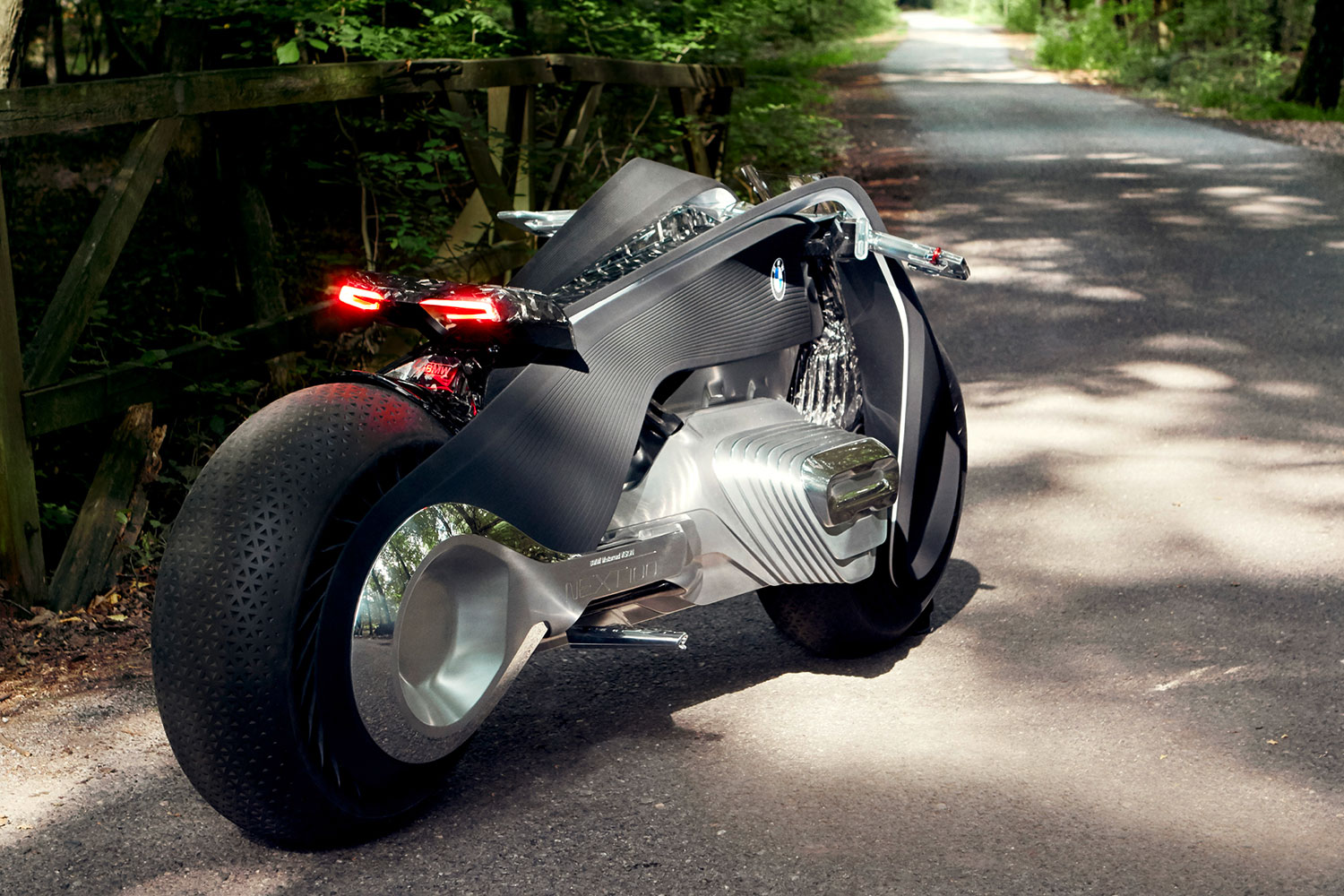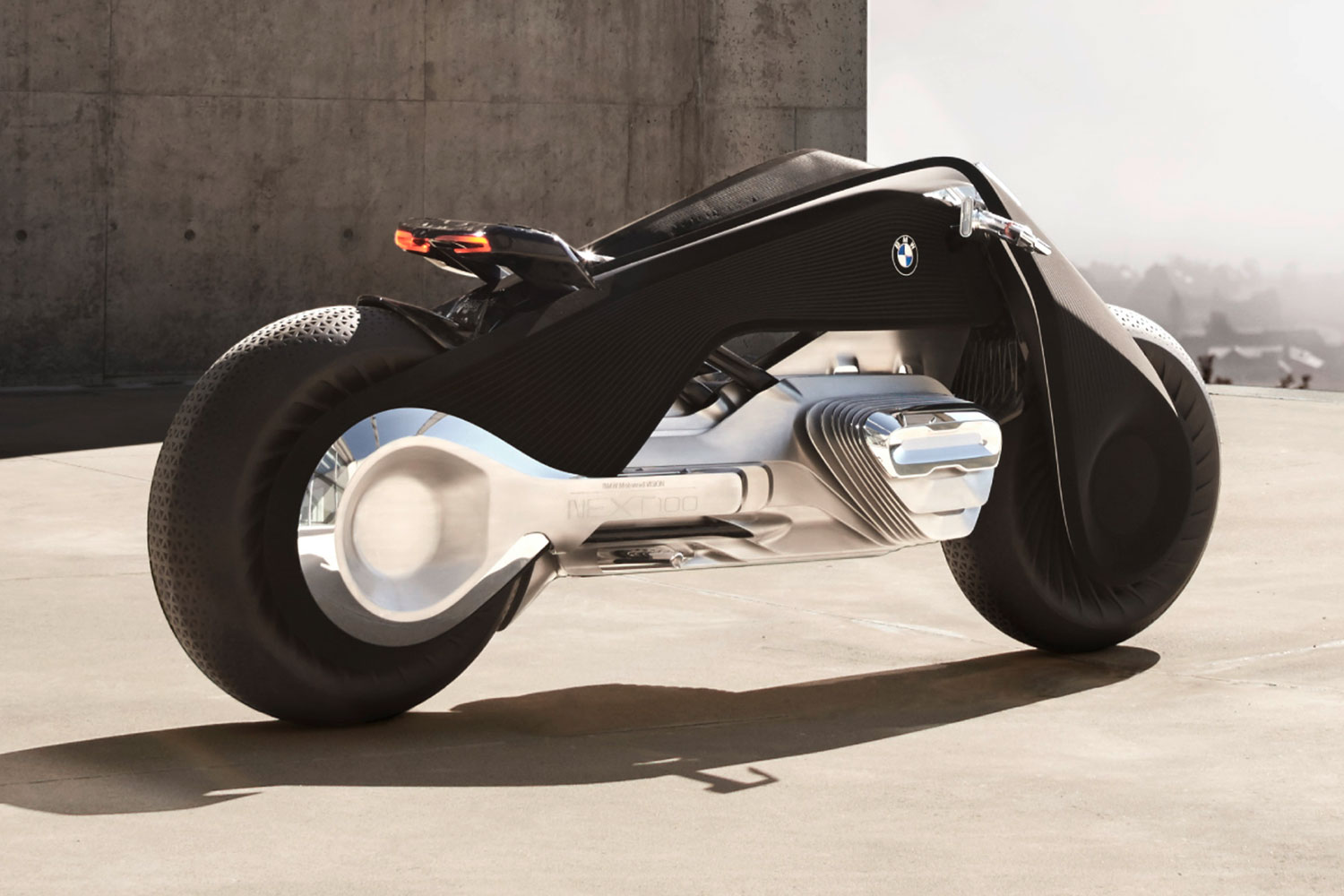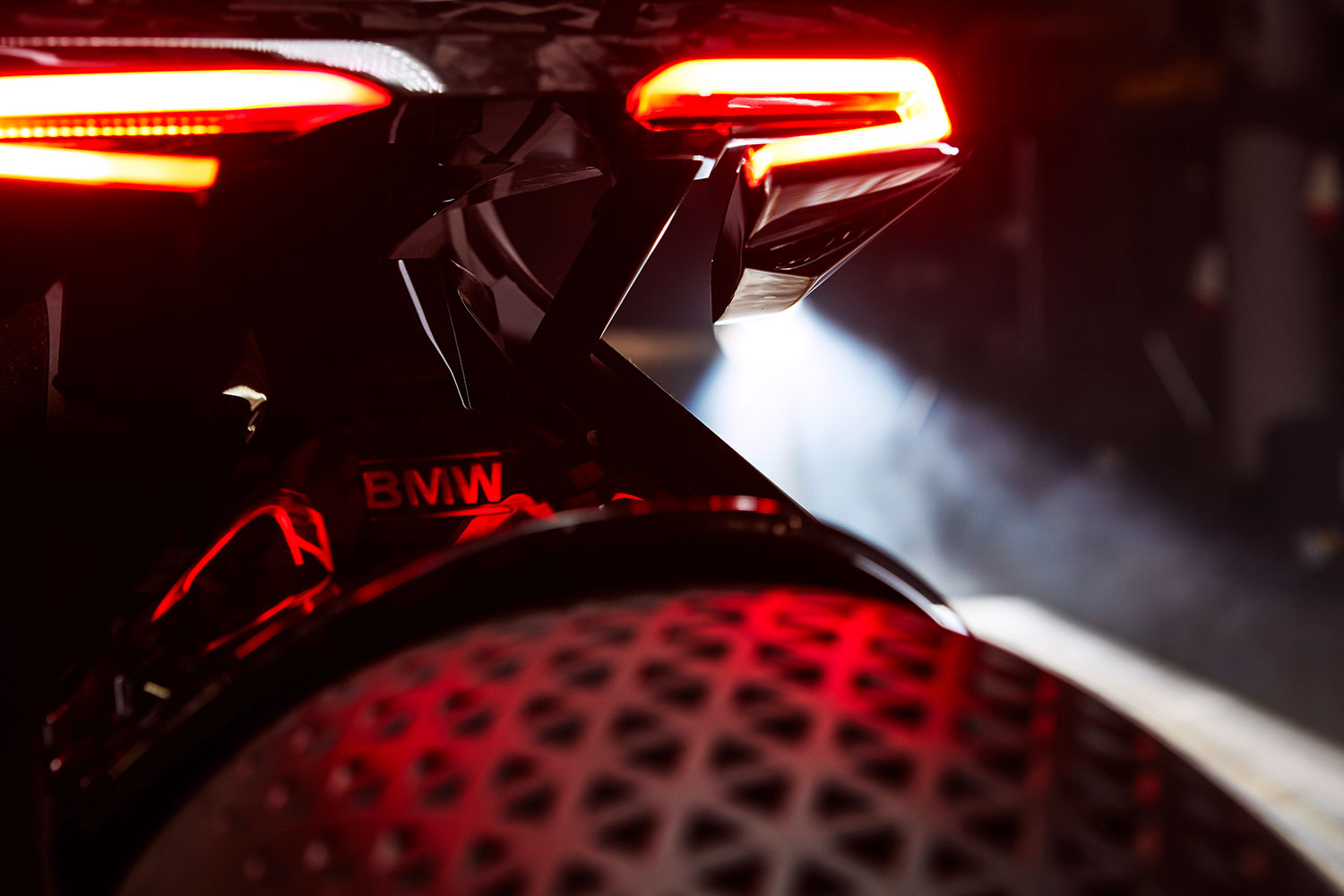With the reveal of its Motorrad Vision Next 100 concept motorcycle, BMW has rounded out its centenary celebration with design studies from each of its brands.
The BMW Vision Next 100 model wants to make you a better driver, the Rolls-Royce 103EX wants to make you a more comfortable passenger, the Mini Vision Next 100 concept wants to facilitate effortless urban mobility, and now Motorrad’s Vision Next 100 creation wants to help you escape.
“Motorcycling is about escaping from the everyday: The moment you straddle your bike, you are absolutely free,” said Edgar Heinrich, head of design for BMW Motorrad. How does the Vision Next 100 concept motorcycle let you escape? Without the need for a helmet or protective gear, the futuristic two-wheeler lets riders fully experience the elements.
Part of the bike’s design includes classic BMW cues like the black frame triangle (pioneered by the 1923 BMW R32), white lines, and boxer engine shape. Because this bike is powered by a “zero emissions solution,” there is no actual engine, just the appearance of one. What that solution is, exactly, is a mystery, but the housing actually extends outwards when the bike is in motion, aiding aerodynamics.
One of the Vision Next 100’s most noticeable features is its Flexframe, which looks like a single piece that connects the front and rear wheels. Because of its malleable nature, it actually helps the bike steer without joints. Just turn the handlebars and the frame turns with it. It’s Gumby’s perfect motorcycle.
As a whole, the bike concept has a naked appearance but its design elements function like a full-faring moto. The large metal reflector above the front wheel has a built-in daytime running light and also helps deflect wind. The seat, upper frame cover, and wings are made of carbon.
The styling is obviously impressive, but more incredible is the technology. The variable tread on the tires helps dampen the bike, the safety systems will automatically balance the bike if the rider is losing control (even if the bike is tipping over while stationary), there’s a “Digital Companion” working in the background to alert riders of upcoming hazards or to take over in emergency situations, and a digital visor shows telemetry, navigation, and other data across the rider’s field of vision by tracking his or her eye movements. There’s almost too much technology to list.
The Motorrad Vision 100 Next concept was unveiled alongside intelligent riding gear. The suit warms or cools the rider based on weather conditions, the neck section inflates to provide extra support for the upper vertebrae, and built-in sensors will alert the rider when banking angles become critical. It may look like a fashion statement without the need for bulky protective padding, but it’s as much an engineering feat as the bike itself.
“The BMW Motorrad Vision Next 100 unites the best of both worlds – digital and analogue – for the ultimate emotional experience,” said Heinrich.
BMW has envisioned every element of how riders will engage with their machines decades from now. I won’t say it’s an ideal situation for those who crave control and traditional mechanics, but it’s undeniably innovative.
















